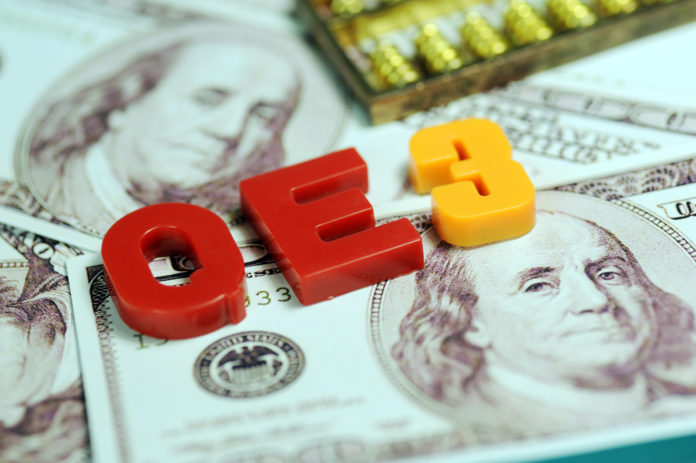Last week, the Federal Reserve announced the end of the third leg of quantitative easing, or QE3.
QE3 lasted for over two years, with the Fed buying between $40 billion to $85 billion in mortgage-backed securities each month. This number was tapered to $25 billion in August.
The greatest ‘side effect’, so to speak, of quantitative easing has been a run-up in the stock market that has coincided with each phase. In the 2+ years of QE3, the Dow has broken its previous all-time high 40 times, most recently on October 31. Its current level of 17,390 is about 26% higher than it was at the start of QE3.
So what is to become of the market at the end of QE3? We looked back at phases 1 & 2 for some insight:
Quantitative Easing Phase 1
This was the original inception of the program, implemented in response to the financial crisis of 2008. Beginning in November of that year, QE lasted a total 16 months and saw the government purchase about $1.4 trillion in debt and mortgage-backed securities.
Effects on the Stock Market: Over the 16-month life of QE1, the Dow Jones Industrial Average (DJIA) grew a total of almost 2400 points, or 28%. This information is even more impressive when you consider the DJIA continued its decline for the first three months of the program—meaning over the last 13 months, the Dow grew a whopping 66%!
Aftermath: QE1 wrapped up on March 31, 2010, and by July 1 the Dow had sustained a 14% drop. Undeterred, the Fed announced that phase 2 of quantitative easing would begin that fall.
Quantitative Easing Phase 2
Beginning in November of 2010, the Fed announced this phase of quantitative easing would promote a more sustained economic recovery. It lasted only half as long as phase one—eight months—but added another $600 billion in securities purchases.
Effects on the Stock Market: It wasn’t as pronounced as phase one, but considering the shorter time period, investors did quite well for themselves during the eight-month duration of QE2. By the time the program wrapped up on June 30, 2011, the Dow was up about 12%.
Aftermath: Almost immediately, the bottom dropped out of the stock market. Within six weeks, the market had dropped 16% amidst fears about the national credit rating.
Quantitative Easing Phase 3
Phase 3 wouldn’t begin until September 2012, but it has been by far the longest, most sustained attempt to stimulate the U.S. economy. Originally, it was announced that monthly purchases would total $40 billion, but that number would ultimately grow as high as $85 billion per month.
Effects on the Stock Market: The Dow Jones Industrial Average set 40 all-time highs over the life of QE3, the latest (and highest) occurring on its final day, October 31, 2014, when it closed at 17,390. That’s a 28% increase in almost exactly two years.
So what will be the aftermath to the conclusion of QE3? Both of the first two phases saw immediate market corrections within 45-90 days. If that trend holds true a third time, are you prepared to sustain another loss on Wall Street?













